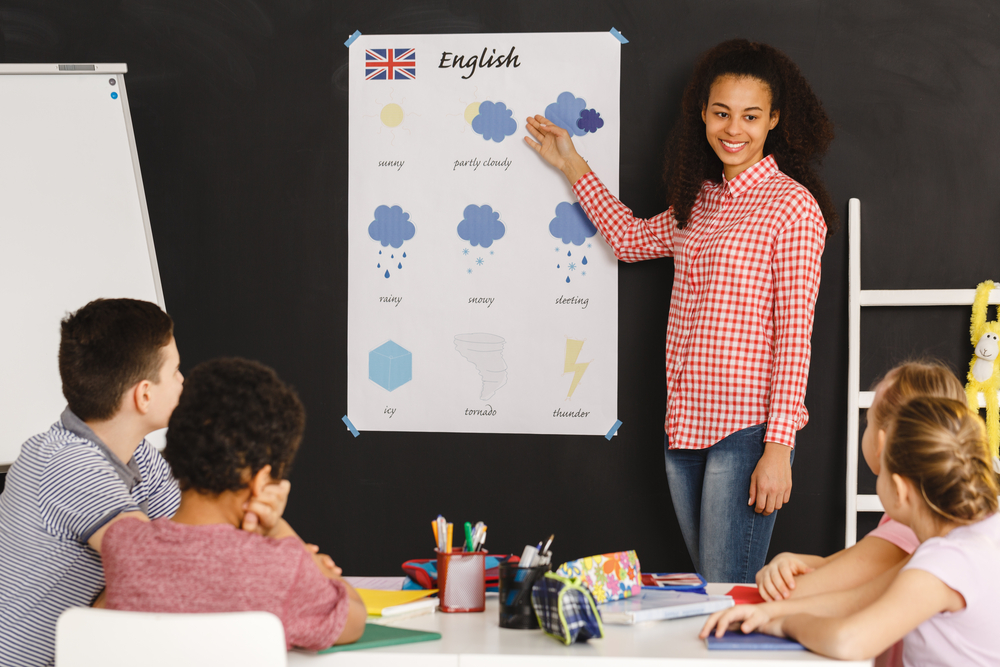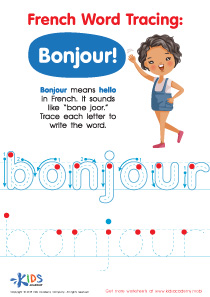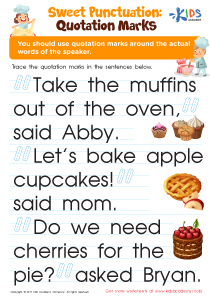Understanding plurals Extra Challenge Grammar Worksheets for Ages 6-8
5 filtered results
-
From - To
Welcome to our "Understanding Plurals Extra Challenge Grammar Worksheets" tailored for ages 6-8! These engaging worksheets are designed to enhance your child's grammar skills by providing extra practice on plural forms. Featuring fun activities that promote critical thinking, our challenges encourage kids to differentiate between singular and plural nouns through engaging exercises. With a mix of word puzzles, matching, and fill-in-the-blank tasks, these worksheets are perfect for reinforcing classroom learning at home. Help your child master plurals while enjoying a delightful learning experience. Download and witness their confidence in grammar grow today!
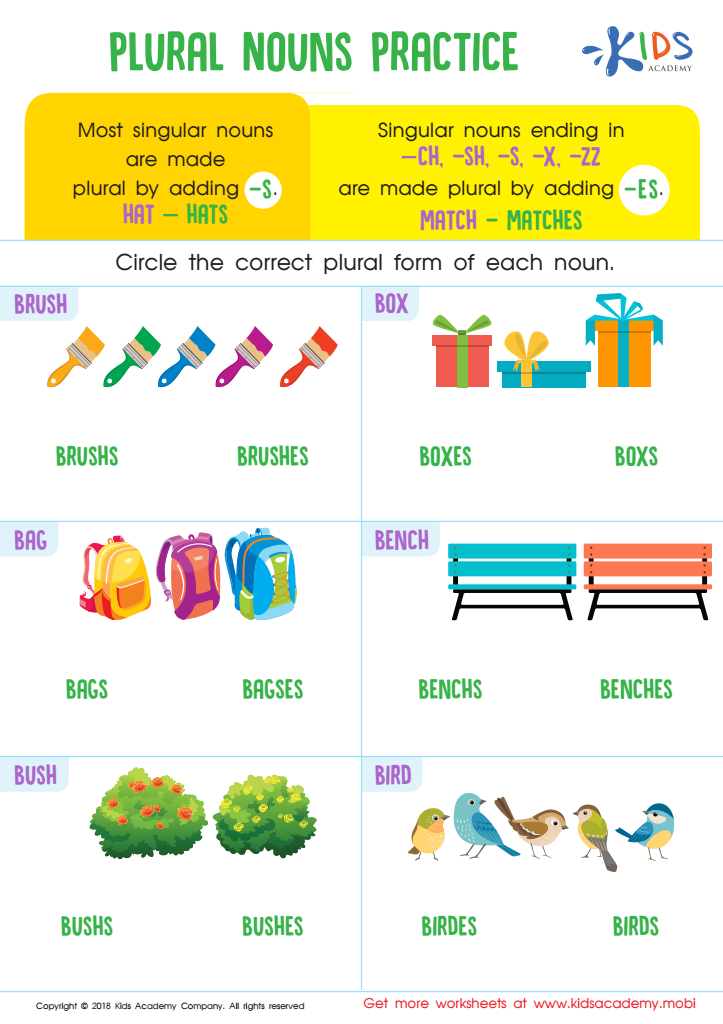

Plural Nouns Practice Worksheet


Plural Endings Maze Worksheet
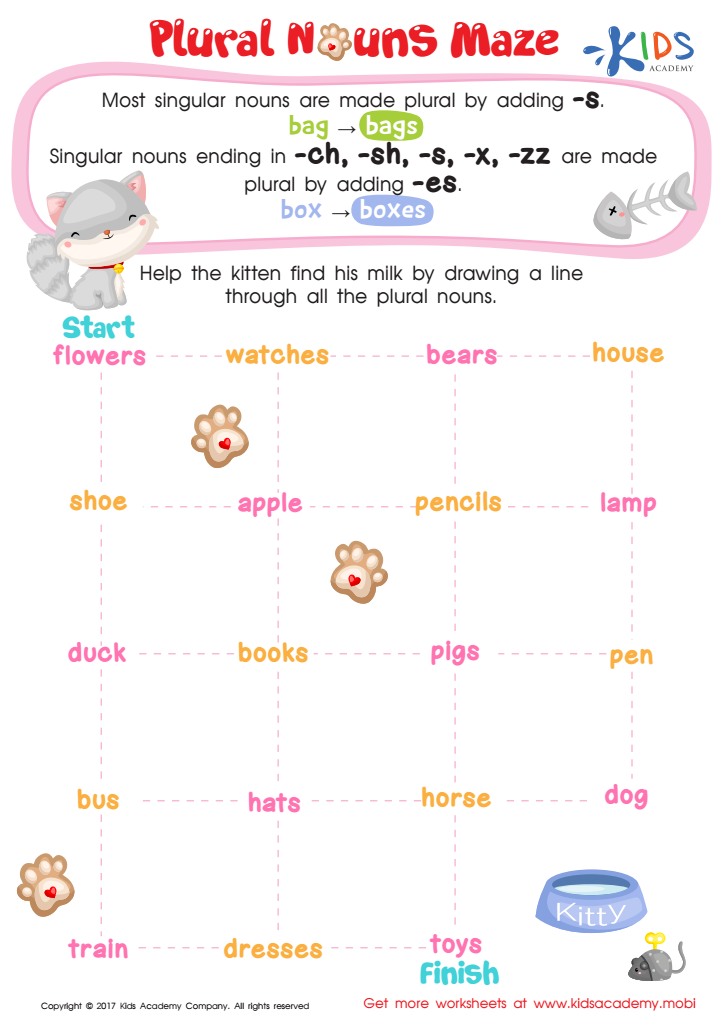

Plural Nouns Maze Worksheet
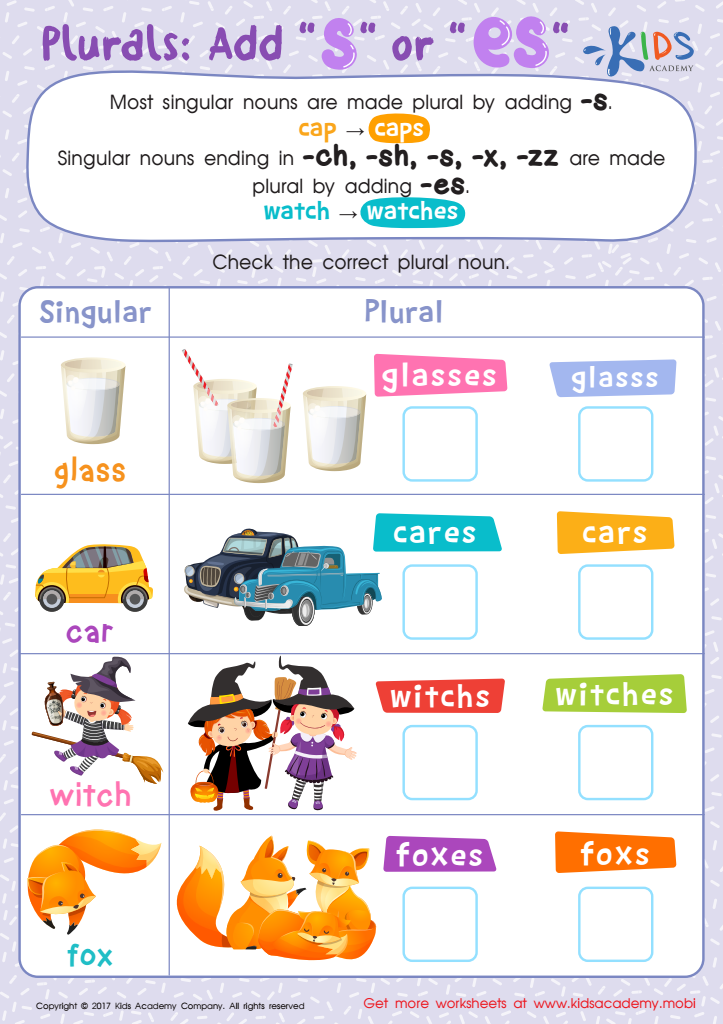

Plurals: "–es" or "–es"? Worksheet
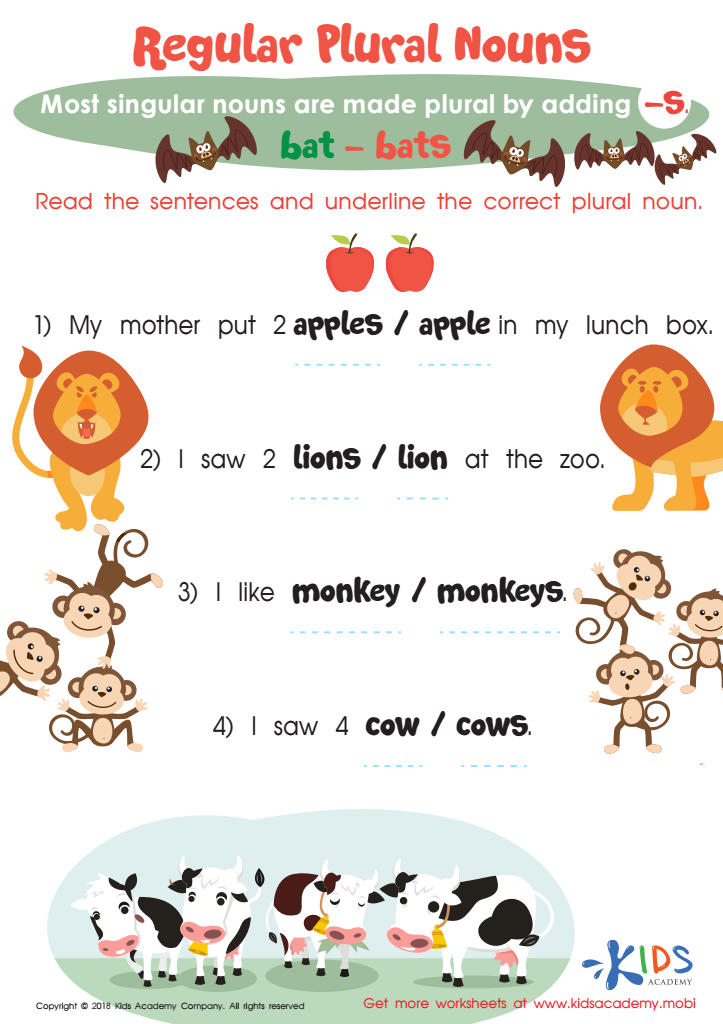

Regular Plural Nouns Worksheet
Understanding plurals is a fundamental aspect of language that significantly impacts young children's literacy development. For parents and teachers working with ages 6-8, mastering plurals is crucial as it lays the groundwork for effective communication and writing skills. Grasping the concept of plurals helps children enrich their vocabulary and express themselves more accurately.
When children learn to recognize and correctly use plurals, they become more confident readers and writers. This early knowledge enables them to enhance their storytelling and comprehension skills, as plurals often appear in informative texts, narratives, and dialogues. Engaging students with challenges and interactive activities around plurals can spur curiosity and deepen their understanding. Research shows that connected learning methods, such as games and discussions, make the retention of grammar concepts more effective.
Additionally, addressing understanding plurals cultivates an inclusive learning environment where children can practice language skills collaboratively. This harmonious learning atmosphere helps reduce anxiety associated with grammar rules. Ultimately, when parents and teachers prioritize plural comprehension, they invest in a child's long-term academic success, empower them to express ideas cohesively, and instill a love for language at an impressionable age.
 Assign to My Students
Assign to My Students







.jpg)
